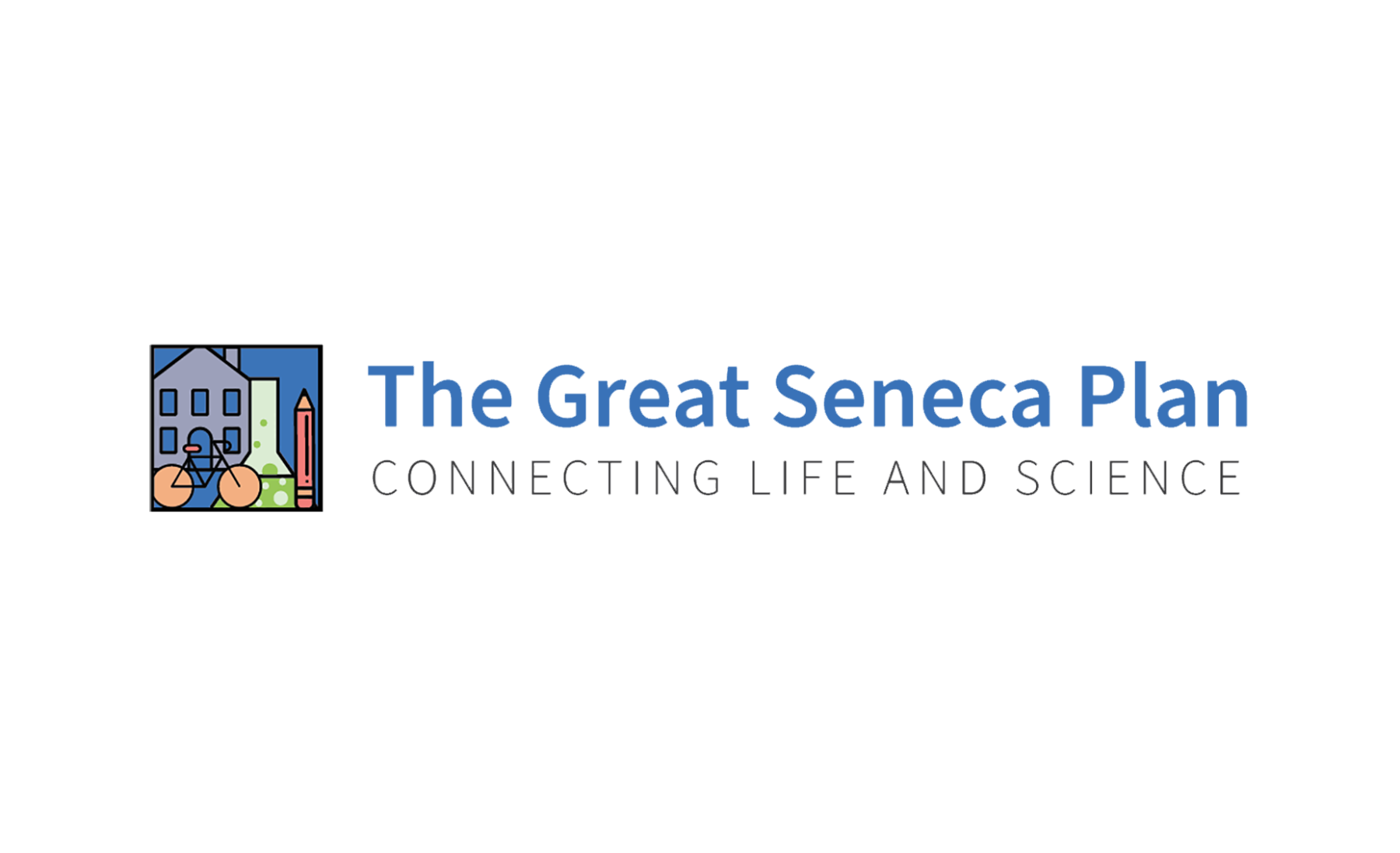Master plan focusing on the county’s life sciences industry hub in the heart of the I-270 Corridor receives County Council approval.
WHEATON, Md. – The Montgomery County Council on July 30 voted to approve the Great Seneca Plan: Connecting Life and Science, a master plan developed by the Montgomery County Planning Department, part of The Maryland-National Capital Park and Planning Commission (M‑NCPPC). The plan focuses on strengthening the economic competitiveness of the Life Sciences Center, a thriving hub that is host to a diverse population and leading life sciences, medical, and educational institutions and organizations along the I-270 Corridor.
The County Council approved the plan following a June 12 public hearing and six work sessions throughout June and July (read the County Council’s news release following its July 30 approval vote). The Montgomery County Planning Board, also part of M-NCPPC, approved the plan in April following its own public hearing on March 14 and a series of work sessions (March 21, April 4, April 11, April 18, April 25). Read the Planning Board Draft of the plan; the County Council-approved plan will be posted online soon.
“I join my Planning Board colleagues in thanking Councilmembers for their approval of the plan following a rigorous review,” said Planning Board Chair Artie Harris. “We look forward to working with the community and our public- and private-sector partners to implement the plan’s recommended actions to retain and attract top life sciences industry talent to the county, incentivize the production of housing at more price points and types, and make the Life Sciences Center more of a destination in the county and the region.”
The bulk of the recommendations are for the Life Sciences Center, but the plan also envisions a thriving residential neighborhood with local serving amenities and services in the Londonderry and Hoyle’s Addition area, and offers limited recommendations for the Quince Orchard, Rosemont, Oakmont, Walnut Hill, Washingtonian Light Industrial Park, Washingtonian Residential, and Hi Wood areas. View the plan boundary.
“The Great Seneca Plan further cements the county as one of the nation’s premier places for the life sciences and biohealth industries to invest in laboratory space and centers of academia,” said Montgomery Planning Director Jason K. Sartori. “Recommendations are focused on making the area more attractive for students or employees and their families to live closer to where they work or study by improving connections between the area’s housing, job centers, and public spaces, and by prioritizing a safer, more accessible street grid worthy of a multimodal and sustainable downtown environment envisioned for the Life Sciences Center.”
Key recommendations
- Establish a Life Sciences Center Overlay Zone for the entire Life Sciences Center area that supports mixed-use life sciences development and incentivizes the production of affordable and market-rate housing.
- Encourage compact, mixed-use development near transit that integrates and connects life sciences uses with residential uses, retail, and neighborhood services and amenities.
- Right-size roadways and intersections to create a safer and more comfortable environment for people who are walking, rolling, bicycling, riding transit, and driving.
- Advance dedicated transit lanes, including the Great Seneca Transit Network and the Corridor Connectors.
- Repurpose two travel lanes on Key West Avenue to establish a tree-lined promenade for people who are walking, biking, and rolling.
- Repurpose a portion of the Great Seneca Highway right-of-way as a greenway and/or space for development. This open space could provide more than 4.5 acres of new development or publicly accessible open space for active recreation and social gatherings.
- Increase on-site clean energy generation, incorporate strategies to increase building energy efficiency, and incorporate environmentally sustainable development strategies into all developments.
- Facilitate new development and adaptive reuse of existing buildings to meet industry demand based on quantity, type, and size of life science real estate. Encourage development of small- and medium-scale lab space.
- Rezone properties in the Londonderry area to achieve a mixture of uses, including additional residential and local-serving retail uses.
More about the Great Seneca Plan: Connecting Life and Science
The Great Seneca Plan: Connecting Life and Science covers 4,330 acres in the heart of the I-270 Corridor. A large portion of the plan area includes the Life Sciences Center, the county’s premier location for the life sciences and biohealth industries and a thriving economic hub that is host to a diverse population and acclaimed international medical and educational institutions. The Life Sciences Center and adjacent areas contain approximately 9,000 private sector life sciences jobs, more than 60% of the county’s total private life science employment. Recommendations are organized within the themes of the built, social, natural, and economic environments and provide guidance for land use; zoning; urban design; transportation; parks, trails, and public open space; the economy; and the environment.
As part of the plan’s development, Montgomery Planning commissioned a study examining the real estate needs of the life sciences industry and evaluating the compatibility of integrating life sciences with housing and small-scale commercial development. Countywide, there are more than 400 life sciences-related establishments, employing over 40,000 public and private sector workers. The study developed a set of actionable recommendations to support continued growth of the life sciences industry.
View the Montgomery County Life Sciences Real Estate and Land Use Compatibility Study.
Watch Montgomery Planning’s January 25, 2024, presentation of the study to the Planning Board.
